Started in 1950, the Breton manufacturer built its reputation on speakers with names that always evoke the sea. They made high-end speakers but gave them a traditional treatment. That is, until the 1990s, when the brand developed its SCS technology, which stands for Source with Spatial Coherence. The speakers became coaxial, installed in spheres or semi-spheres in order to precisely position each diaphragm one behind the other.
This principle has been adopted, naturally enough, for Cabasse Hi-Fi wireless speakers. The round shape also has the advantage of offering a design which has come a long way from the probably-too-classic cubes of old. The "ball" format invites curiosity; it's attractive, and it lends charm to this freestanding connected speaker – making it something people want to look at, and show off. Cabasse creates this lightly-worn aesthetic with a chrome circle, with a choice of black or white versions. Behind the glossy finish many features are hiding that all add up to make the Pearl Akoya completely autonomous. The speaker is delivered in an exclusively-shaped carrying case.
Features
Price: £1,499
Speakers: 1x 13cm coaxial with 25mm tweeter, 1x 17cm woofer
Amplification: 300 W + 300 W + 400 W
Bandwidth: 30-27,000 Hz
Functions:192kHz/24-bit HiFi network playback, Asahi Kasei AK4490 DAC, streaming music services, web radio, DLNA playback
Connections: Wi-fi, Ethernet, Bluetooth, 1x minijack analog input, 1x optical digital input, 1x micro-USB port
Weight: 8 kg
Dimensions (W x H x D): 220 x 220 x 220 mm
Overview of The Pearl Akoya
The Akoya speaker is a sphere of 22 centimeters in diameter resting on an integrated flat base. At the front, a raised grid bearing the brand logo hides the mid and high speakers. These are placed on top of each other in coaxial mode in order to offer the widest possible coverage from a single speaker.
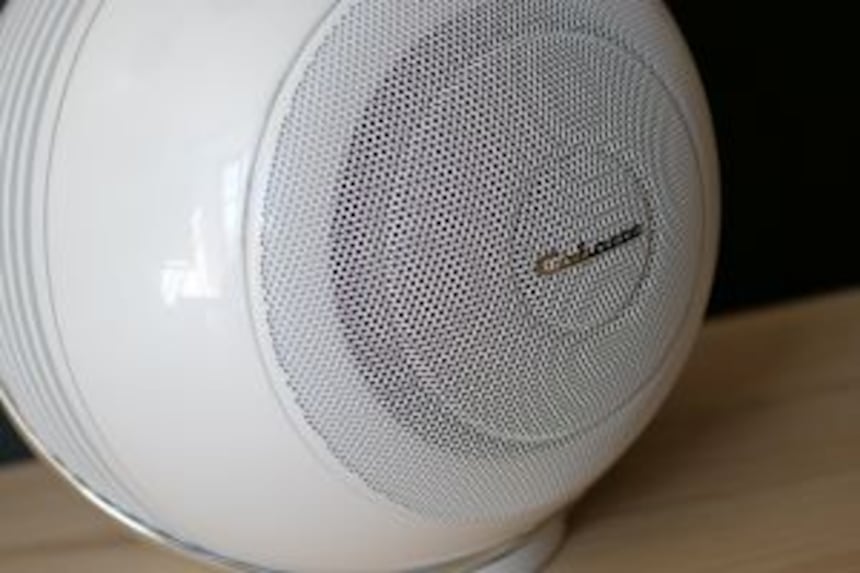
The 17cm bass speaker is aligned on the same axis as the coaxial, but points in the opposite direction, backwards. It's not protected. This means that we can admire its carbon membrane and its wide suspension which provides deflections of 2cm. This feat of engineering allows a small speaker to restitute bass frequencies even at lower volumes.
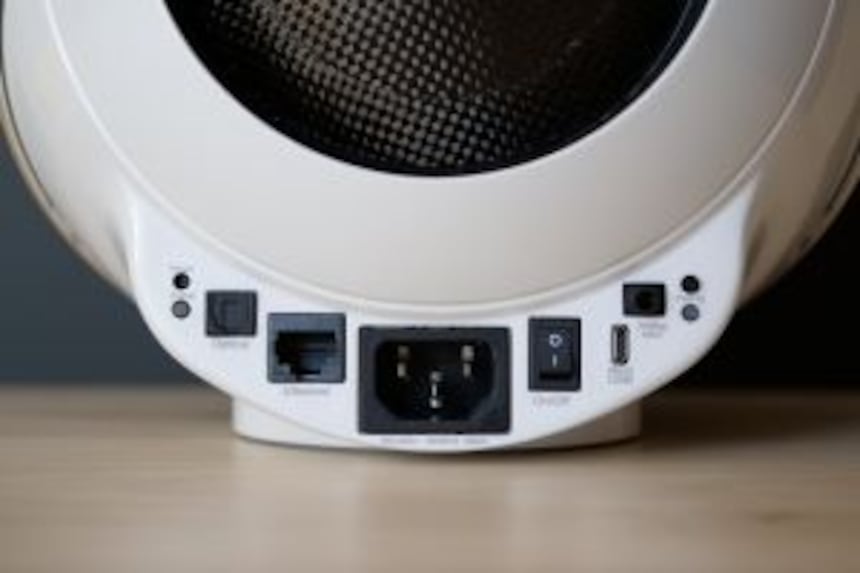
The connector is located just below the woofer, at the base of the Akoya. It includes an analog input on a mini-jack, an optical digital input and a micro-USB input. Cabasse includes two small adapters with the product: a mini-jack to RCA and a micro-USB to USB-A. So you have twice the choice when it comes to connecting your device. There is also an RJ45 socket for connecting to a network.
Two LEDs show the status of the Akoya. On the right, a blue LED flashes during the installation phase and turns off when the connection is active. On the left, a turquoise LED remains lit as long as the speaker is powered on. A small switch on the back side allows the user to cut off the power.
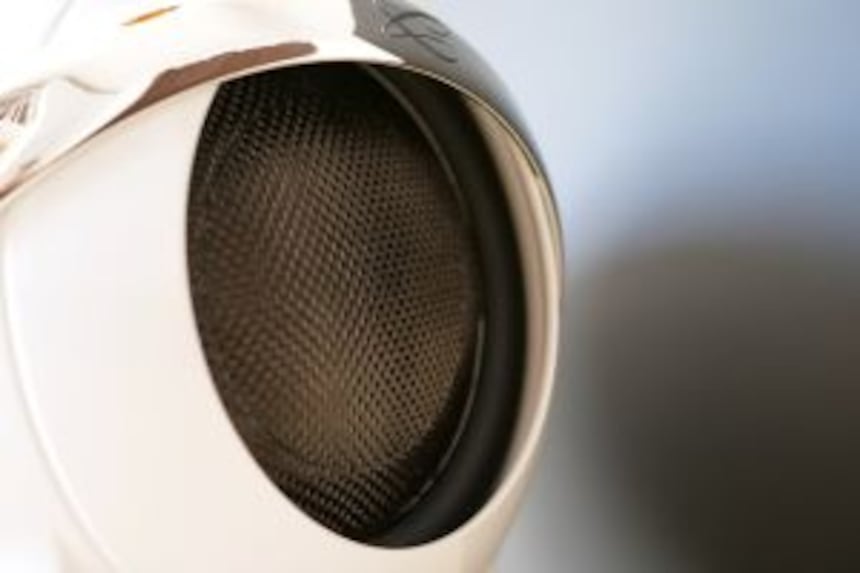
Each speaker enjoys its own amplification channel. And Cabasse doesn't do things by halves. The tweeter and midrange each have 300 watts RMS each at their disposal. The woofer goes to 450 watts. That's a total of 1,050 watts - and it can climb as high as 2,100 watts. With all this, the speaker can manage 115dB of sound pressure. Note the presence of a DAC Asahi Kasei AK4490, a touchstone element for leading Hi-Fi and mobile products.
Functions of The Pearl Akoya
The Akoya can be easily controlled via its Bluetooth remote, which comes with a lacquered and metallic finish – the same look as the speaker – volume, play/pause, previous/next. But naturally one will tend to use the Cabasse mobile app instead, which offers complete control over the sound and the music selection.
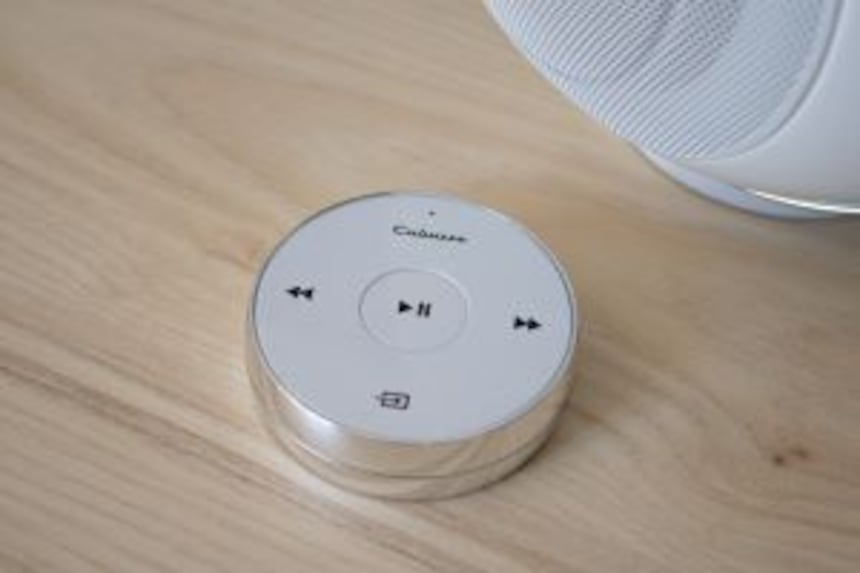
Installation is quite straightforward: just follow a series of steps, the main task being to choose the type of connection, Wi-Fi or Ethernet. Then, the application sets about automatically audio calibrating the Akoya. With its own built-in mic and using sliding frequencies, it takes 30 seconds to adapt to the specifics of the listening room. And the final task is to rename the speaker.

The app lists the available speakers. When the Akoya is selected, we find the list of inputs, shortcuts to favourites and a small notched wheel for choosing settings. The list is long, with a first level that deals with audio, connection mode or linking to a voice assistant. A second level offers a lot of different ways of customising the way the speaker works.
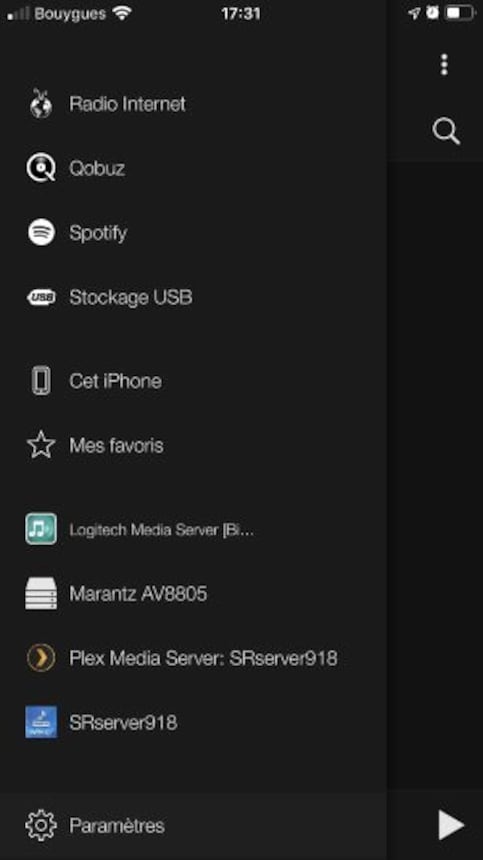
In the top left, the main menu lists the electronic sources. That's radio first, followed by music services: Qobuz is directly integrated in high resolution. Then there is the option to navigate to any device accessible via the USB port, or to the content stored in the smartphone used to control the speaker.
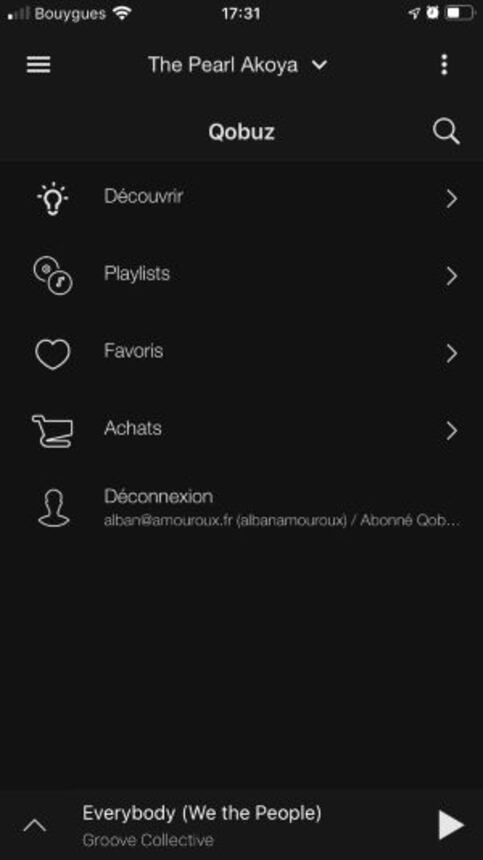
The last part of the list concerns DLNA. All servers found on the network, such as NAS servers or shared folders, appear with their logos. If you do not have a sharing programme already, Cabasse offers you to download StriimServer, a free programme for PC and Mac which will make all your audio files accessible to your speaker.
In practice
Pearl speakers' reputation is safe. The strong power associated with a woofer with excellent displacement offers satsifying, hyperdynamic restitution, but without falling into caricature. The Akoya doesn't suffer from a "pneumatic" lower register, but rather a well-articulated one with lots of impact. The double bass on the song Fever by Petra Magoni from Live at FIP takes shape before us with all the undergirding, roundedness and resonance that are characteristic of the instrument. It is impressive, and above all, the Akoya goes the distance: when you raise the volume, you do not feel it weaken even slightly.

The Akoya is a mono speaker. But the music just jumps out of this ball of energy. Regardless of the orchestral mass, readability remains very good, much better than with run-of-the-mill small wireless speakers. The atmosphere is limited, for sure, but all the pieces are present, without stepping on each other's toes. The atmosphere of Capitol studios, where Jeff Goldblum recorded live with The Mildred Snitzer Orchestra, is reproduced perfectly: the voices remain well in front, without being smothered by the instruments. It turns out that a mono speaker isn't that bad at all. It makes for easy listening thanks to the quality of the restitution: almost as if a pair of Hi-Fi speakers had been stuck together.
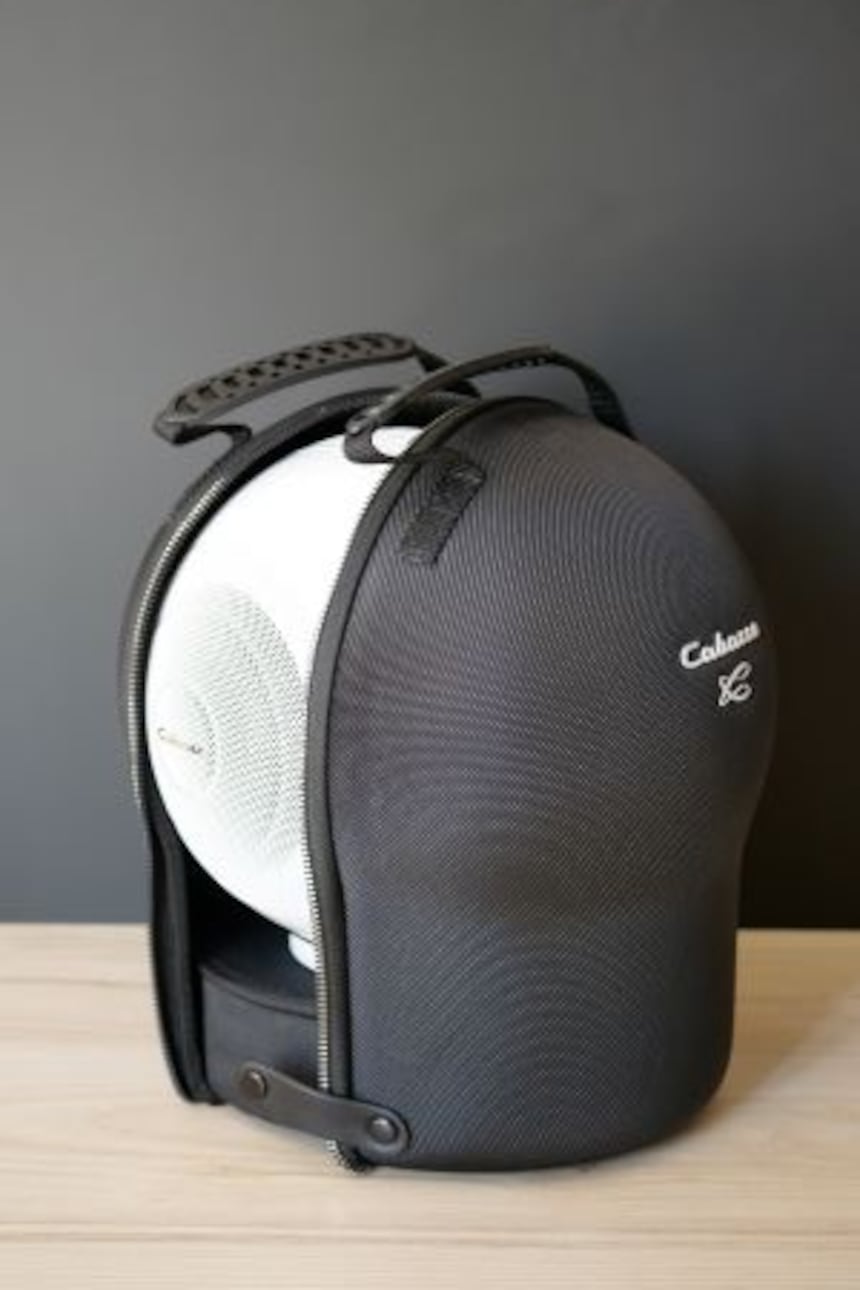
This Cabasse wireless speaker's fine medium range really allows it to respect the timbres of whatever it takes on. The coaxial speaker is a house specialty and it's particularly enjoyable with the Akoya. It makes for perfect timing over the whole spectrum, from voices all the way to brass, which is also afforded a convincing presence. The high bass / low midrange is not left out either, with speed on the tom-toms. Listening to Junior Wells' blues on Sweet Sixteen allows you to get a full sense of the audiophile possibilities offered by this connected speaker.
+
A very lively mono speaker
A powerful and articulated bass
Its connectivity
-
The little click upon changing tracks
No AirPlay or Chromecast
Exclusive price-tag
Conclusion
The Pearl Akoya is a worthy variation on its big sister. Its amazing bass capabilities always hit the mark even at lower volumes: it's ideal for smaller rooms. It moves freely, with respect for all frequencies, a lot of precision and definition at all levels. We could reproach it for changing the balance depending on the sound volume, but within the range of normal use, it's just perfect. How could you do better? By adding a second Akoya to switch over to stereo, open up large-scale soundscapes and develop even more stability and flair in lower frequencies. Do that, and you'll be able to manage without a Hi-Fi system for good.


